|
|
|
Late,
late,
late fall greetings to all readers,
Finally it has begun to cool down!
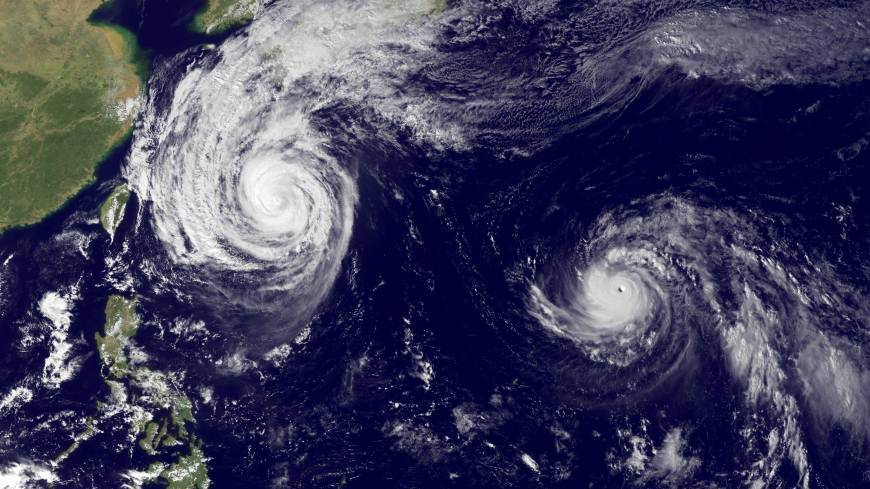 |
|
At least in Japan, summer did not go gentle into that good night . Nah. It kicked and fought and screamed, and when it idid leave, it pulled a half dozen typhoons in succession in its wake before letting things cool down. It was quite amazing, actually.
Astute readers may remember I began last month's newsletter thusly: "As it seems to almost every year in Japan, summer defiantly hung on until one day it almost instantly morphed into fall. I think that happened this morning."
Yeah, well, that was short lived. It got hot again right after I wrote that. Fortunately, things have cooled down considerably now. But , I digress. Back to sake.
It was a tumultuous fall. I ran two Sake Professional Courses in the span of two weeks, a feat I still cannot believe I pulled off so smoothly. Pretty proud of myself for having gotten through it intact, I am. But again I digress. Back to sake.
Other upcoming news:
The Japan-based Sake Professional Course is now open for registration. This year it has filled up quickly and but two seats remain as of right now. Learn more below.
Any day now, the inaugural edition of the first sake-only English language magazine, Sake Today, will be released. I will send a special "Exra Extra Read All About It" notice when things are finalized, letting you know where you can get both physical and electronic versions. Readers' support is what will make this puppy fly! Until then, you can learn a bit more here , and you can also follow us via the usual suspects of social media.
The 2013 Brewing season is in full swing. All across Japan, toji (brewmasters) and kurabito (brewing personnnel) have begun to focus on the countless tasks at hand to coax and encourage nature and the world of micro organisms to cooperate in creating this year's sake.
If you really want to learn about sake, rather than reading some stodgy newsletter, get to Japan and visit some kura. That is the way to do it! And this coming year offers more opportunities than ever, especially through Sake Tours . Learn more below.
And please, as always, enjoy the newsletter - preferably with a glass of fresh sake!
Warm regards,
John Gauntner
|
|
Cinder Block Nama
Earlier this fall, I was privileged enough to attend a tasting of all sake made by Honda Shoten, brewers of Tatsuriki sake in Hyogo. For these guys, it is all about the rice, as well it should be. They are right in the backyard of perhaps the best rice fields in Japan, and have access to obscenely good Yamada Nishiki, but also to outstanding Omachi, Shinriki and other rice varieties. Some of their better sake can get a bit pricey but are worth it for those that understand what great rice is all about.
The mid-sized room encompassed long tables paralleling the walls in a concentric rectangle, with sake spaced evenly around all four lengths. The most expensive sake sat closest to the door, and in spite of it being labeled numbers one to five, I resisted the urge to dive in there, feeling it somehow disrespectful to the sake itself, inanimate though it now was. I passed it by, intending to return after warming up my palate, a promise to myself I later kept.
In the back right corner sat a half dozen sake, all of them tokubetsu junmai, all made with a different rice. Yamada Nishiki. Omachi. Shinriki. Yamadaho. Gohyakumangoku. They were lined up next to each other, offering a rare and outstanding comparison of great rice, with more flavor intact than might be with a higher grade than these tokubetsu junmai. The exercise was as educational and gratifying as I had mentally billed it to be, and I moved on. After another half-round of the room, directly opposite the comparative tasting just described, I came to the same sake lined up again – but this time, they were nama. In other words, unpasteurized.
As most readers surely recall, almost all sake has been pasteurized twice – once after pressing on its way to the maturation tank, and once again on the way from that to the bottle. There are a handful of variations to this pattern, and amongst those of course is totally unpasteurized sake, i.e. nama-zake.
Certainly nama-zake has its appeal. But I have long held that most of the time, sake that has been properly (read: gently, just enough to provide stability) pasteurized offers more depth by virtue of eliminating a veil-like set of characteristic aromas and flavors. The key phrase here is “most of the time.” There is plenty of very delicious nama-zake out there, much of it deep and complex. And while nama is not inherently better than its pasteurized counterpart, it is almost always very enjoyable provided it has been cared for properly, i.e. kept cold. Still, most of the time, I prefer sake in which I can perceive depth of flavor and aromas, and that more often than not means pasteurized sake.
 |
|
And here was an exemplar case of why I feel that way. The nama-zake made from the different rice types had about as much subtlety as a set of cinder blocks. They were very tasty cinder blocks, mind you! All five of them were delicious. But they were big, they were bold, and they were dense. Amidst that stone-like opacity, I could not even begin to see the differences or typical characteristics of the individual rice types, at least not nearly as well as I had just a handful of bottles previous.
All I could say was, “Yup; it’s nama.” Don’t get me wrong; it was good! But all subtleties of rice difference were lost in the nama-ness affront on my palate.
This is not intended as a disparaging rant on nama-zake; not at all! It can be wonderful, indeed. Just remember it is not unequivocally better, and that from time to time, some subtleness and depth might be the price for enjoying its fresh, lissome youth. This is a matter of personal opinion, of course, so by all means taste enough to form your own.
|
|
Taxing Taxes of Olde
The now-defunct "Zoukokuzei"
In a recent newsletter about aged sake, I read about how the system used to tax sake brewers that was in place from the late 1800s until just after WWII was one that indirectly but strongly discouraged brewers from even thinking about trying to age sake. While this system is long defunct, it left the industry with decades of catch-up self-education on the results of aging, yet at the same time shaped the sake we enjoy today.
In short, back then brewers had to pay tax to the government on sake as soon as it was pressed, in other words, as soon as the rice lees has been filtered away after fermentation was complete, i.e. as soon as it became proper sake. Note, it did not matter whether the stuff ever got sold. As soon as it came into existence, the government demanded its due taxes.
The problem was – especially back then – what if it went bad after that, or if a tank leaked or it got spilled. Too bad, intoned the Ministry of Taxation. And so ensued clandestine tactics.
In order to make sure that every taxable drop was accounted for, the government would measure everything at every stage. (They still do, more or less, today.) They operated on the basic assumption that brewers were fundamentally trying to avoid paying taxes. And so genmai (unmilled, “brown” rice), white (i.e. milled) rice, koji, liters of moto (yeast starter), and liters of moromi (fermenting mash) all had to be carefully measured and recorded for each batch.
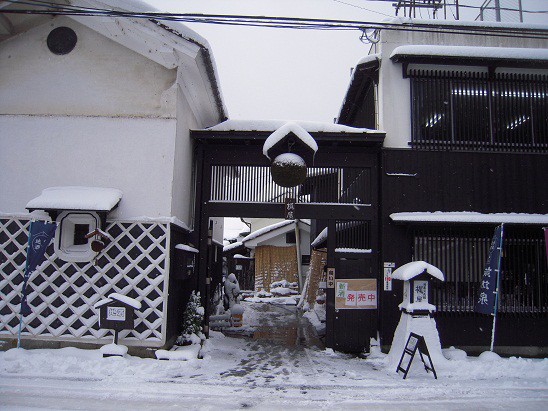 |
|
The tax inspector would appear at both regularly scheduled times and make surprise visits too, inspecting those records to make sure there were not any inconsistencies, and that the stuff in the tanks reflected those numbers. And of course, they were always standing there in person, watching when the sake got pressed to make sure none was shuttled into an unaccounted-for location. The system was known as “Zoukokuzei,” which simple means “taxed on volume of production.”
After reading the article, I spoke to the author, a now semi-retired (one never really leaves the sake world!) former director of a large-ish, dignified and diverse brewery of some means. He explained the details of how things proceeded.
“Back then,” he began, “it was a game, really. Everyone was doing it!” His smile was laced with some embarrassment, much like a kid caught with his hand in the cookie jar, as he continued.
“In truth, we felt we had to – or at least had the right to – make up for what was sure to be at least some inevitable losses, be it from inadvertent spillage or leakage, sake going bad from incomplete pasteurization, or just other unexpected mishaps. We had to at least make up for what we were sure we would lose!”
So the brewers would try to hide part of the moromi, or hide the sake as it was being pressed, and went w-a-y out of their way to come up with creative ways of doing this. And of course, there were in fact occasionally incidences of the moto or moromi spilling or leaking. But it was hard to convince the tax man of the veracity of this.
They would have none of that nonsense, and would scour the kura looking for where it was being hidden. Never limiting their searches to the main brewing facilities, they would go into the living quarters of the kuramoto (the owning family) and poke around in closets and storage rooms, and if they did not find anything there, they would search for the unaccounted volumes in the homes of neighbors and relatives. It seems to have been quite the game!
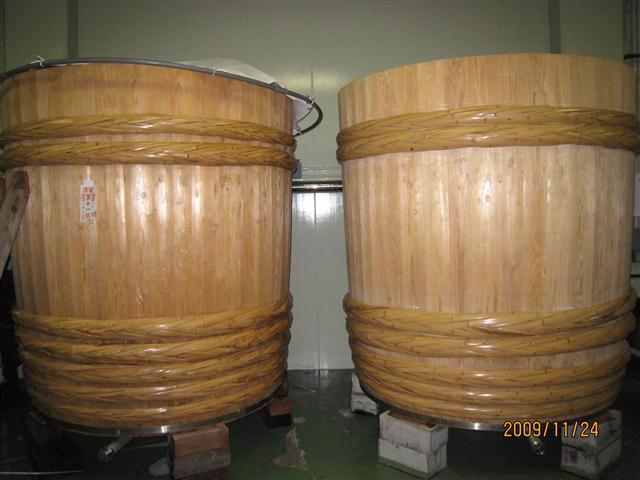 |
|
The drag for the brewers was that, again, from time to time there were real accidents. The wooden tanks in use back then might have cracks, so that months after filling a tank with sake for maturation, they could open the tank and find it empty. Whoops! Or the wooden stopper at the bottom, if not properly inserted, might pop out and a whole tank’s worth of ambrosia could disappear in a couple of hours. Or warmer-than-expected temperatures could spoil a sake not yet pasteurized. Yet they could expect no redress from the tax man for this. Hence the perceived need to pre-emptively account for that via whatever means available to them.
And this is why the Zoukokuzei system was so hard on the brewers. Fortunately, the government is more reasonable these days, and brewers are now taxed on what they sell and when they sell it. And this has opened up brewers’ willingness to at least experiment with aging sake. We can at least understand their reticence of brewers long ago, since once they have paid taxes, if the aging thing did not go well, they were out a significant amount.
This seems to me to have affected sake as we enjoy it today. Very little sake is matured today, much less than might have been had brewers been permitted the leeway to experiment over the decades. As such, sake has developed in such a way that it is best enjoyed relatively young, albeit with some exceptions.
And I, for one, am OK with that.
|
Sake Brewery Tours in Japan, 2014
Here is the latest from Sake Tours :
We are very excited to announce two new destinations in 2014 to Okayama (January 27th - 31st) and Niigata (February 17th – 21st). There’s something special about these two destinations. The Japan Sake and Shochu Makers Association is supporting part of the cost. They invite all sake enthusiasts to really experience Japan through sake with their help. This is a one-time opportunity you cannot miss!
Both tours are 5-day excursions into the world of sake brewing, drinking, and enjoyment, featuring an exclusive seminar by the greatest sake sensei. The contents of the tours feature sumptuous cuisine, luxurious yet quiet relaxing time at hot springs, and excursions to fantastic cultural highlights in areas seldom visited by foreigners.
Okayama January 27 - 31, 2014 (Monday-Friday)
Visit four sake brewers in the home of Omachi sake rice. The Okayama tour combines sake, food, and art with visits to beautiful classic towns. Some very memorable experiences you will find only with us are: a session with Omachi sake rice grower, hands on rice field plowing, private Kagura dance performance, private Shiki Hocho fish cutting knife ritual once performed only for the emperor, hands-on guinomi sake cup making experience with Bizen artists, observing art of sword making and more. On the last day, simply relax at the hot springs by the river far away from the city, in the snow.
Niigata, February 17 – 21, 2014 (Monday-Friday)
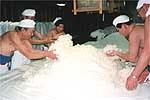 |
|
Niigata is known as the sake and rice capital. From over 90 breweries, you will visit four breweries who represent very distinctive traditions including Sado Island. In addition to a chance to interview sake brewers and rice growers, some special moments include: a private Geisha performance at dinner, a masterful tea ceremony, paring of Niigata sake at French restaurant, and hands on experience of Kodo Taiko drum. Of course, we'll have time to explore the distinctive cultural heritage of the area and to relax at hot springs.
Both tours are 270,000 JPY per person. With 50,000 JPY support from Japan Sake and Shochu Makers Association, your cost is only 220,000 JPY.
Please visit http://saketours.com for tour information after September 15. Group size is limited to 12.
Details are still being finalized for the Okayama and Niigata tours, so email Etsuko at info@saketours.com for more information. 2014ke is.
|
 Announcements and Events Announcements and Events
Sake Professional Course in Japan
January 20 to 24, 2014
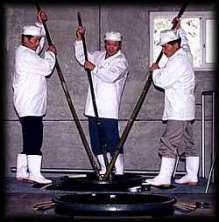 |
|
The 2014 Sake Professional Course in Japan will be held from Monday, January 20 to Friday, January 24, 2014. This is
it - the most comprehensive and intense sake educational program on the planet. Three days of class and tastings, sake pubs and izakaya at night, and two full days of sake brewery visits.
No sake stone remains left unturned!
Again - this is it! This is the course that started it all 11 years ago, for which I had a whopping three people the first year. Thanks to everyone's support and interest in sake, it is still the most interesting way to learn about sake in existence. Study during the day, drink sake at night, visit breweries as well. Meet owners and toji, taste sake at the breweries, immerse yourself in sake in every sense of the word - and get certified!
The cost for the course is JPY 180,000 (about US$1800) and includes five days of instruction, sake and evening meals with sake. Lodging and transportation are not included. Please learn more here , or by emailing me directly.
~~~~~~~~~~~~~~~~~~~~
Sake Education Council Website
Please take a moment to check out the website for the Sake Education Council, the organization behind the Certified Sake Professional and Advanced Sake Professional certifications. We plan to grow steadily, strongly and continually, and we will need the support of all those that love sake to do so. Follow us through the "usual suspects" of social media.
Sake Homebrewer's Online Store
Please be sure to check out Homebrewsake.com for supplies, information and a forum, including lots of supporting information on everything from recipes to history. I have been meaning to mention this site and the gentleman behind it, Will Auld, but have repeatedly forgotten in past newsletters. The site is replete with instruction, augmented with videos, schedules, and more. If you are even remotely interested check this site out right away.
Don't forget the archives!
Older editions of this newsletter are archived here.
Really old editions are archived here.
|
 Sake Education Central Sake Education Central
Sake's Hidden Stories and The Sake Notebook are now available for the Kindle, Nook and iBooks!
The Sake Notebook is now available for the Kindle as well as the Nook. And now, it is available for iBooks on iTunes as well!
Sake's Hidden Stories too is now availabe on the Kindle as well as the Nook. And now, it is available for iBooks on iTunes as well!
Both are
less expensive than their original pdf version too. Now is your chance to learn more about sake from your phone or tablet! Check 'em out!
Sake Dictionary App for the iPhone, iPod and iPad
"For 99 cents, this app ROCKS!!"
-a satisfied customer
There you are, perusing a menu, or standing in front of a shelf of great sake, or perhaps reading a sake newsletter… and up pops one of those hairy, pesky sake terms in Japanese. You know you have heard it many times, but dammit, you just cannot remember what it means now…
No problem! Just whip out your iPhone or iPod and fire up your trusty old version of
The Sake Dictionary. In a matter of seconds, you’ll be amongst the cognoscenti once again. But… if only you could pronounce it properly. Now that would really rock!
Done! Just tap on the term and you will hear a clear example of how to pronounce the term in Japanese. Repeat it a couple of times and the term is yours for eternity, to toss about and impress your mates.
What’s more, it’s
less!
Less than what it cost before, much less. Like less than one-seventh less. For a limited time only, the audio-enhanced version of The Sake Dictionary iPhone app is available for a mere $0.99.
|
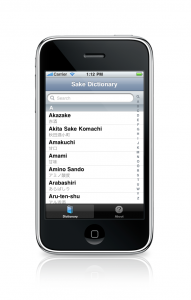 |
|
|
The Sake Dictionary is a concise little package of all the terms you might ever come across when dealing with sake. Almost 200 of them - including sake grades, rice variety names, seasonal sake terms, special varieties, rare types, post-brewing processing words and the myriad terms used in sake production - many of which are not even familiar to the average Japanese person on the street - are listed up here with concise, useful and clear definitions and the written Japanese version as well. And now, with the new audio component, you can listen and learn just how to pronounce those terms properly.
Start to toss around Japanese sake terms like you were raised knowing them! Gain a level of familiarity hitherto unimaginable! Avoid frustrating paralysis when faced with a sake-related purchase!
Get your copy of The Sake Dictionary now and never be confused by sake terms - or how to pronounce them - again.
Get it here: http://itunes.com/apps/sakedictionary
(Note if you have already purchased it, this upgrade to the audio version is free. Just go to iTunes and get it!)
|
Are you not getting this newsletter? I realize that is like asking that
"those not present please raise your hand," but for future reference, should you spontaneously stop receiving this newsletter, please go here and sign up again. Should that not work, please go to www.sake-world.com.
Email newsletter services are very careful not to be considered spam enablers, but the problem is that often very valid email addresses come back bounced as invalid. It is an unavoidable problem. So if you or someone you know is not getting this, or stop(s) receiving it inexplicably, please do take a moment to double check that you are still subscribed.
Sincere apologies for the hassle, mixed with gratitude for reading this newsletter. |
I hope you have found the above information helpful and entertaining. For more information about all things sake, please check out www.sake-world.com. Until next month, warm regards, and enjoy your sake. 
Questions and comments should be directed to John Gauntner, at this email address.
All material Copyright, John Gauntner & Sake World Inc.
Regards,
John Gauntner
Sake World, Inc
 . . 
|
|
